In 2010, Michael Ellis explained the work made by DNEG on Prince of Persia. Then he worked on many shows such as The Bourne Legacy, Enola Holmes and Jurassic World: Dominion.
How was this new collaboration with Director Harry Bradbeer?
We have a very good working relationship and were able to pick up where we left off from the previous Enola. A lot of the original team came back for the sequel and so there was an immediate short-hand and ease in fitting back into the show. We had early read through sessions to work out how we might best approach each scene and Harry is always interested in other peoples ideas while retaining a firm grip on the storyline. He is also very funny!
What was the main changes they wanted to do with VFX after the first film?
This film has a different overall VFX requirement than the first. Last time, we wanted to immerse the viewer in as wide a view of Victorian England as possible. We looked for ways to broaden the world, expanding outwards from Enola as she grows and explores the world around her. In Enola Holmes 2 we are taken to a harsher, dirtier side of Victorian London. This film is tighter and closer to Enola as she is wrapped up in her first case. It feels darker with less green rolling hills and more grimy, foggy London back alleys. So there was challenge in keeping the film feeling expansive and cinematic while aiding the storyline in its confined, grimy locations.
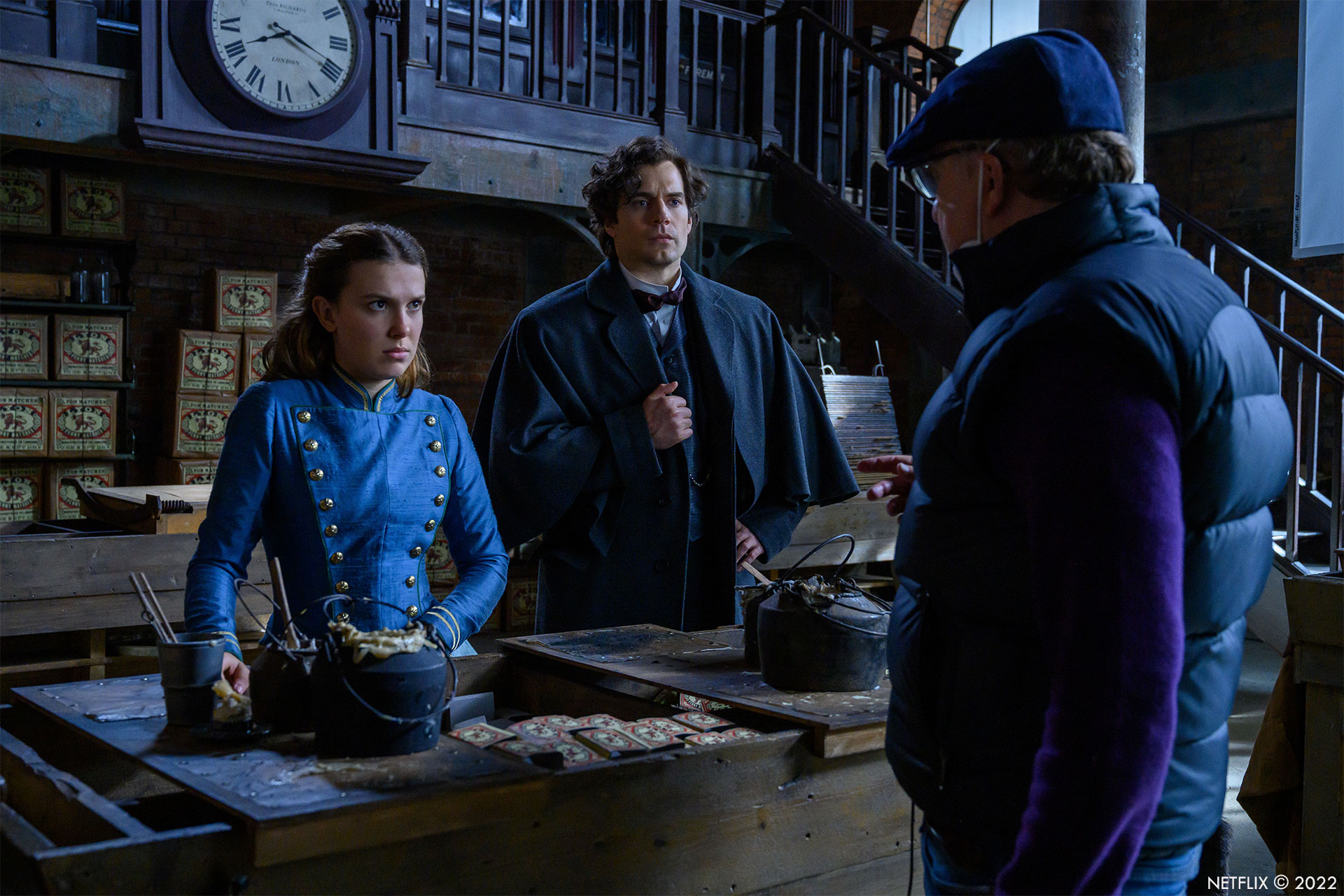
How did you organize the work with your VFX Producer?
Helen Judd and I work closely together. Helen organises everything, controls budget and schedule. I control the creative and technical approaches. We always try to attend external meetings together so that we’re both fully aware of all new developments and we discuss every aspect of the process from initial breakdowns and vendor packs, shot methodologies, reviews and final deliveries.
How did you choose the vendors and split the work amongst them?
We do not have a huge budget on these shows, period world building doesn’t come cheap and so we have to be very careful about maintaining quality. Tax rebates around the world play a large part in allowing us to cover the quantity and quality of shots we need and as the show was shot in the UK we couldn’t then use a UK based vendor.
We discussed the work and several vendors, finally choosing The Yard VFX in Paris and Spin FX in Toronto. We also worked with Host VFX for our in house team lead by Ivan Cipriani and with Jason McDonald at Argon who created previz to help us explore an approach to some of the sequences.
The Match Factory is a particularly challenging location both on the inside and on the outside and I was keen to find a vendor who could concentrate on that group of scenes in their entirety. We had early discussions with Laurens Ehrmann at The Yard and really liked his approach to the work. The interior of the Match Factory was problematic as a shooting location as it was too small and the exterior needed to be positioned beside the busy Victorian Thames. The Yard took on both aspects of the Match Factory and also some of the other wide exterior shots such as the drone shot over the river to Bessie’s house.
Spin FX, completed the lions share of the work on the show, including Enola escaping over rooftops, a horse and carriage chase and the Paragon theatre fight scene at the end of the film which required a CG build for the stage and gantry area of the theatre.
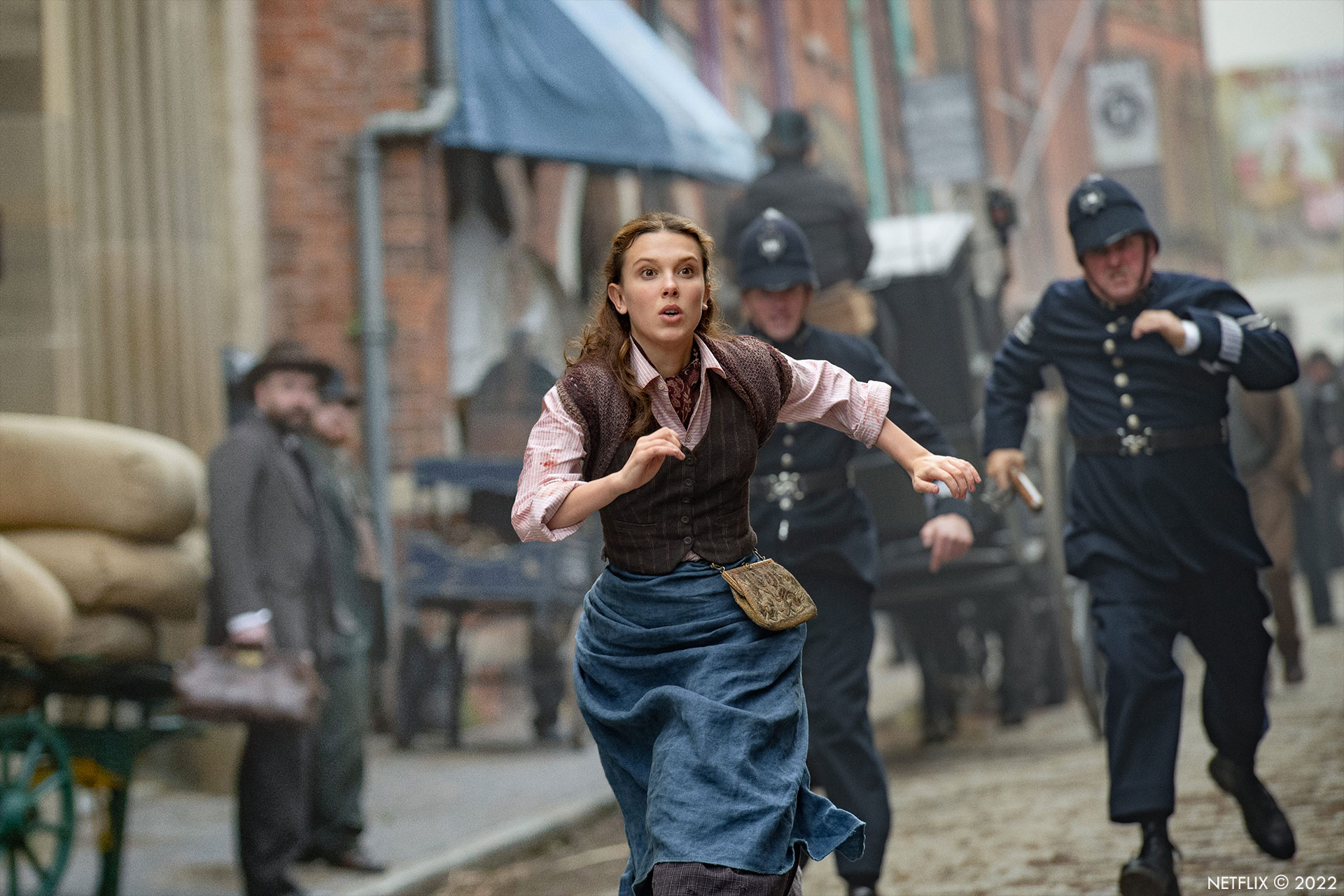
How was the collaboration with VFX Supervisors?
One of the best parts of the job is getting to work with talented people such as Laurens, Ed and Ivan. Collaboration was very straight forward with an easy flow of information and ideas.
What was your approach to create the period London?
We worked closely with Harry and Michael Carlin the Production Designer who both wanted this film to be dirtier, smokier and grimier than the last. We had a lot of period photograhy, muddy docksides and ramshackle streets to base our look on. Locations were selected and Michael along with Supervising Art Director James Lewis created sets which we could extend and create surrounding environments. We added a lot of smoke and dirt!
Where was filmed the London exterior sequences?
Most of the exteriors were shot in London. Baker Street for example was shot on Queen Anne’s gate near St James’ Park. We travelled out to the historic high street in Hull for the opening chase through London streets and to Chatham Docks in Kent for the match factory and Paragon theatre and Bessie’s house shots.
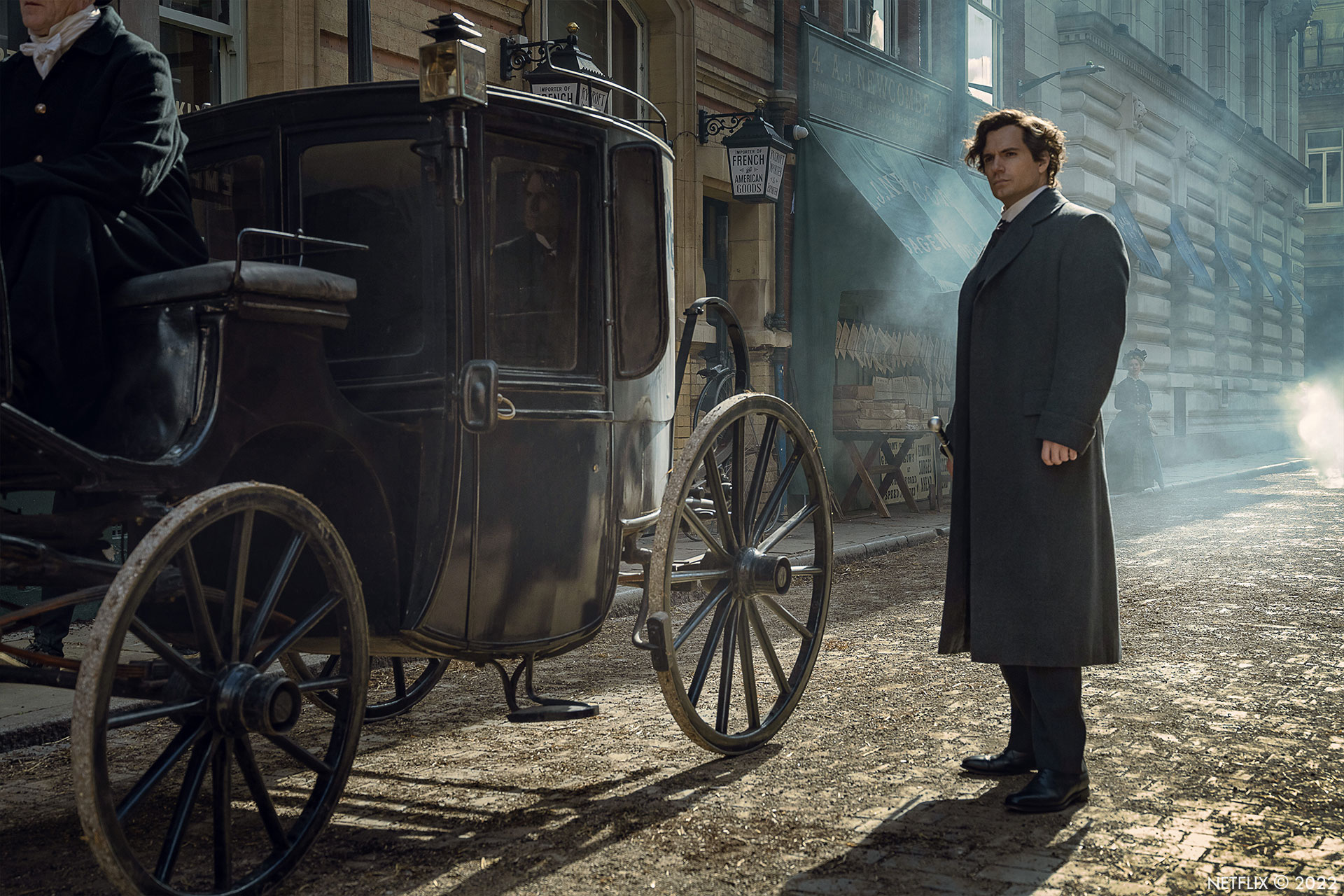
Which location was the most complicate to create?
Two locations spring to mind. The approach to Bessie’s house was challenging. We had a small area of set built on location at Chatham, the narrow alleyway and close buildings. We then shot Bessie and Enola walking over muddy wooden planks within the set from a high drone position. The set covered only a small area of the frame and the team at The Yard replaced everything surrounding the set including, the river, boats, buildings, river workers, atmos and life, a lot of complexity. We also had to work out how the set and the river could connect as the set was a lot higher than the river surface and yet we wanted to connect the two parts of the shot with water. The Yard created a great muddy run-off, where water and waste would seep down to the river level from the set piece.
The other complex challenge was the Paragon theatre interior Gantry fight. The action takes place high up in the theatre gantry. The auditorium and lower level of the theatre stage were built on a sound stage but for various reasons; the confined space, safety and camera positioning, we opted to shoot the high action on green screen. This allowed us to move feeling around the action while still creating a sense of height and jeopardy. We shot Lidar and texture photography with Lidar Lounge, Spin VFX then built the stage and extended higher to create CG views looking up into roof beams and ropes. They also created a skylight to justify light coming into this dark area of the theatre. The space was very complex, aside from the basic theatre structure we had beams, theatre sets, sandbags, ropes and pulleys all over the place.
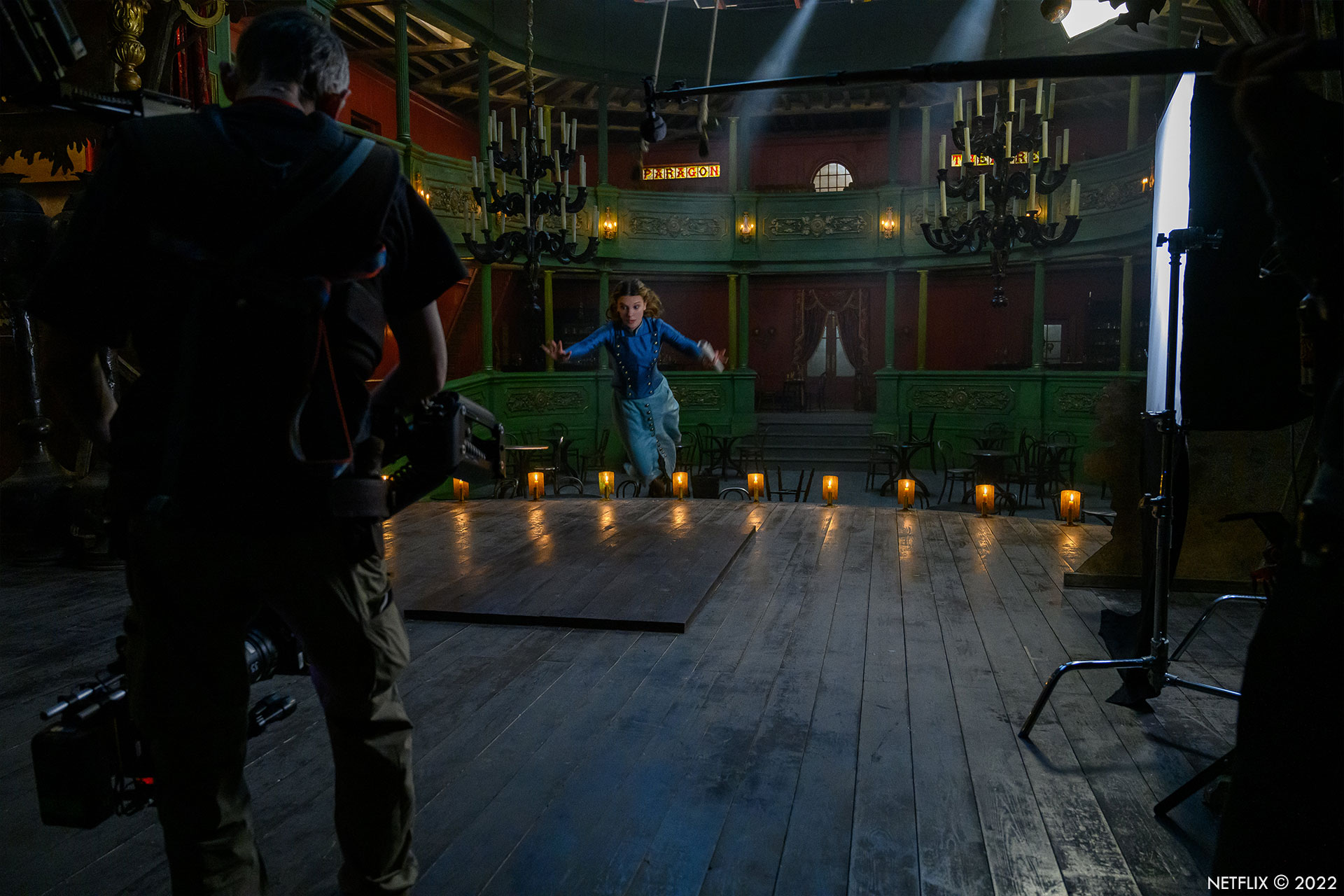
Which stunt was the most complicate to enhance?
Some of the carriage chase shots were particularly challenging with rig-removals. Shooting a scene with horses and carriages traveling at speed and in some cases crashing together requires a lot of safety planning. The carriages needed to have large crash bars which I know were a challenge to remove because horses legs, hooves and moving wheels all had to be painstakingly reconstructed in order to digitally remove the crash bars.
Did you want to reveal to us any other invisible effects?
500 of them are invisible. The rest of them should be invisible 🙂
Is there something specific that gives you some really short nights?
A couple of the shots were a struggle. The view out of a window as Sherlock looks out of Mae’s Bell lane flat still gives me the shakes.
What is your best memory on this show?
The match factory interior scenes were great because they posed a particular technical challenge in extending the scale of the environment and adding more workers but also it was the big pay off for the film and quite emotive. In addition my two daughters Rose and Evie are background extras in the scene. So an exciting sequence for the Ellis family all round.
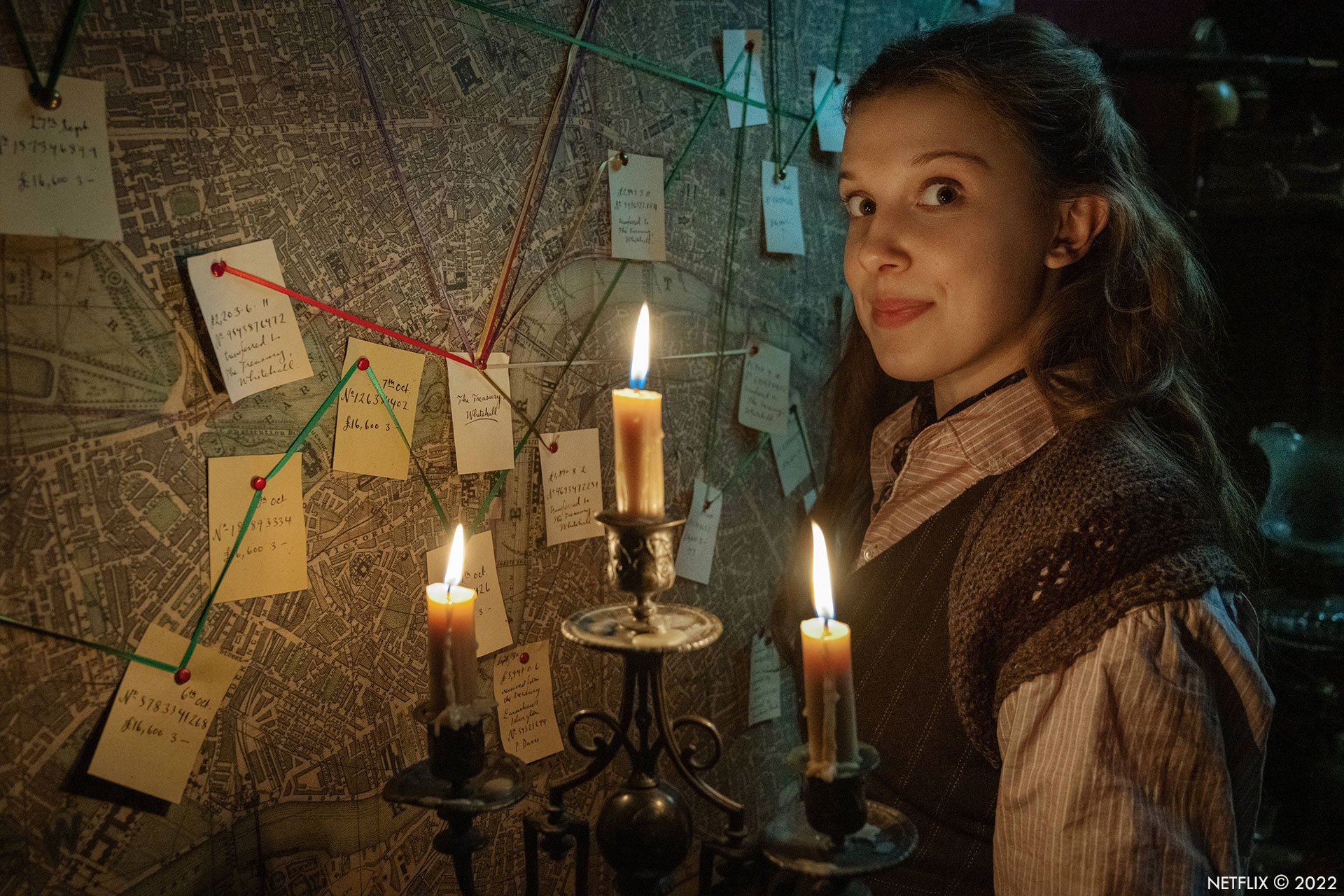
How long have you worked on this show?
Around 13 months.
What’s the VFX shots count?
572.
A big thanks for your time.
WANT TO KNOW MORE?
The Yard VFX: Dedicated page about Enola Holmes 2 on The Yard VFX website.
Netflix: You can watch Enola Holmes 2 on Netflix.
© Vincent Frei – The Art of VFX – 2022






